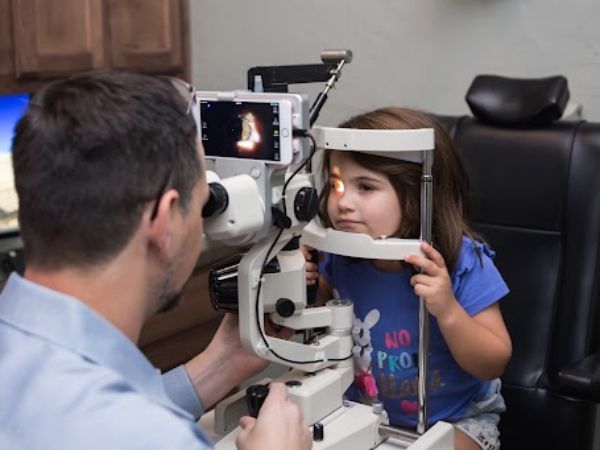You want a good education for your child. That means good schools, good teachers and good vision. That’s right. Good vision. Your school-age child’s eyes are constantly in use in the classroom and at play. So when his or her vision is not functioning properly, learning and participation in recreational activities will suffer. There are things, however, that you can do to be certain your child’s vision is ready for school each year and to relieve the visual stress of schoolwork.
Be Alert for Symptoms
Be alert for symptoms that may indicate your child has a vision or visual processing problem.
Note if your child frequently:
- Loses his or her place while reading
- Turns or tilts head to use one eye only
- Avoids close work
- Makes frequent reversals of letters
- Holds reading material closer than normal
- Uses finger to maintain place while reading
- Tends to rub eyes
- Omits or confuses small words when reading
- Has headaches
- Performs below potential
Seek Thorough Optometric Care
Because vision changes can occur without you or your child realizing it, have your child’s vision examined at least every two years or as recommended by your doctor of optometry.
The examination should include:
- Visual acuity
- Refractive errors
- Nearsightedness
- Farsightedness
- Astigmatism
- Lazy-eye
- Crossed-eyes
- Eye coordination
- Focusing ability
- Eye movement control
- Depth perception
- Color vision
- A comprehensive eye health examination
A review of your child’s health and vision history
Homework, Computers, and TV
Make sure your child’s homework area is evenly lighted and free from glare. Furniture should be the right size for proper posture. During periods of close concentration, have your child take periodic breaks to rest his or her eyes. When your child is using a computer or playing video games, he or she should also take periodic rest breaks. If your child spends many hours working with a computer, ask your optometrist to suggest ways to help avoid visual-related problems.
To make viewing easier on your child’s eyes:
- Be sure the room has soft overall lighting
- Place the screen to avoid glare and reflections
- View TV from a distance of about 6-8 feet away. (or approximately 5 times the width of the screen)
Be sure your child’s hours away from school include time for active visual motor activity and creative play. Both can help keep his or her vision skills functioning properly.









